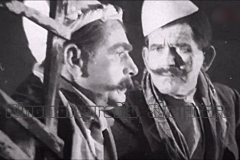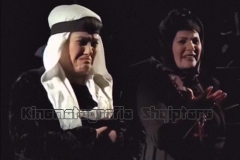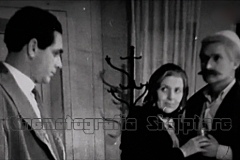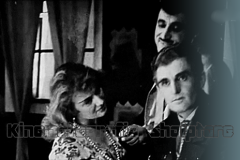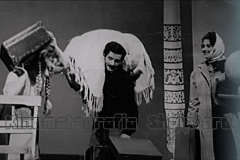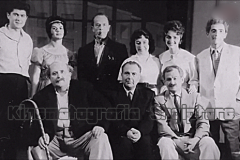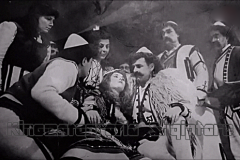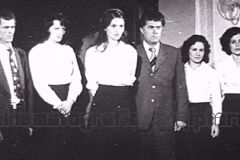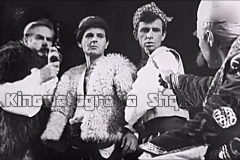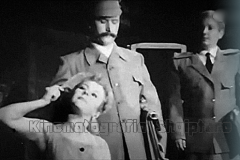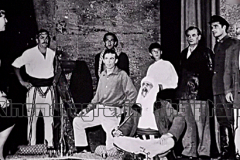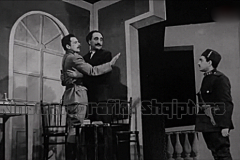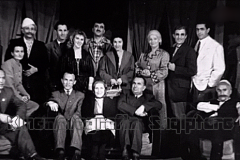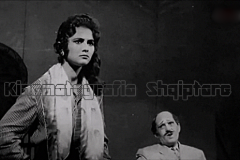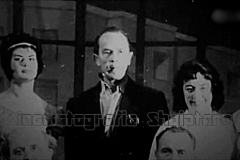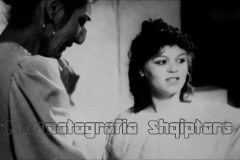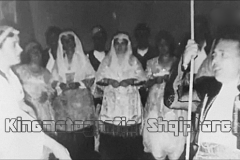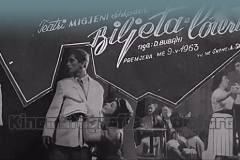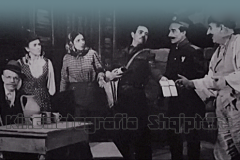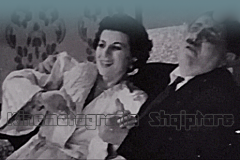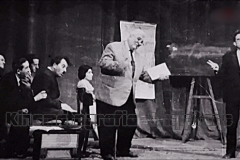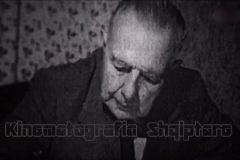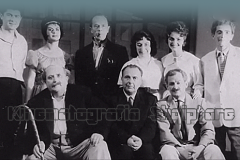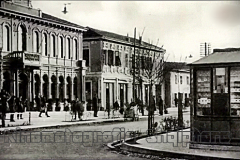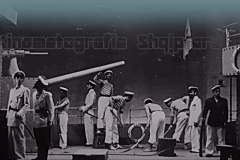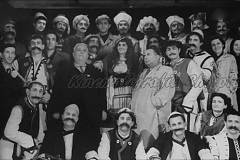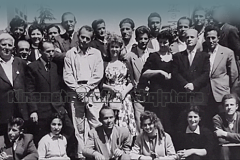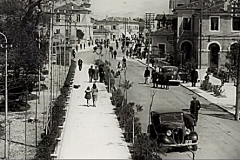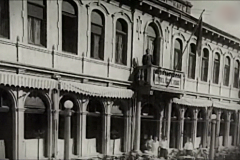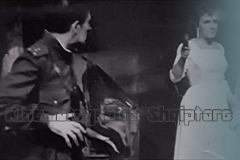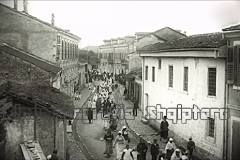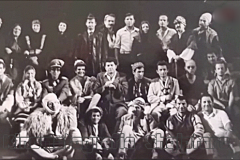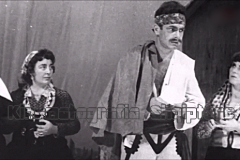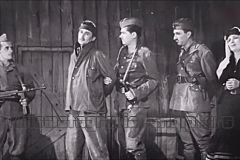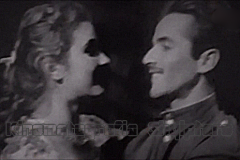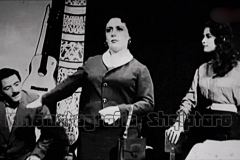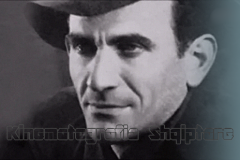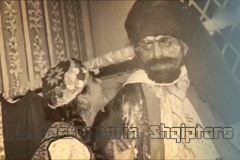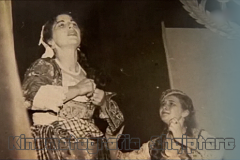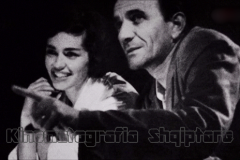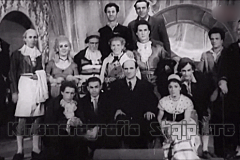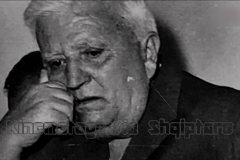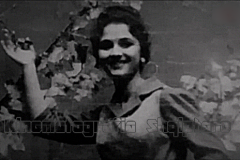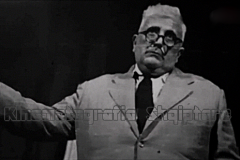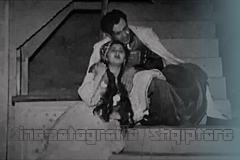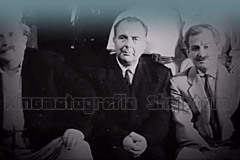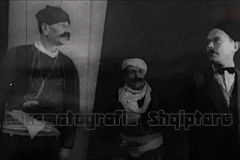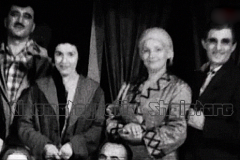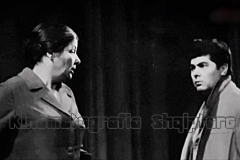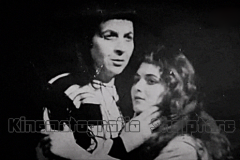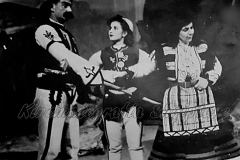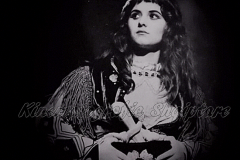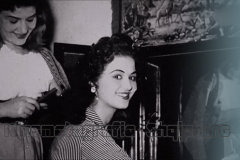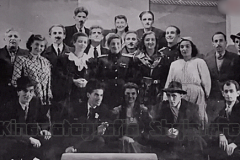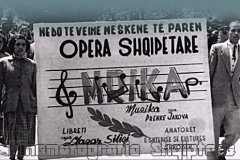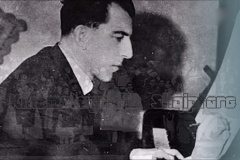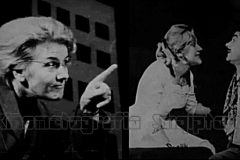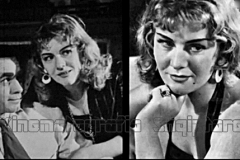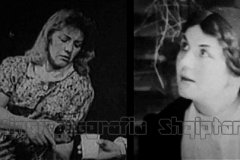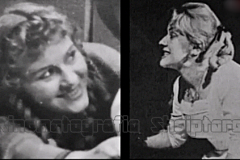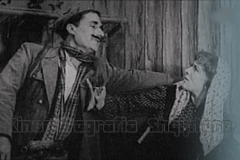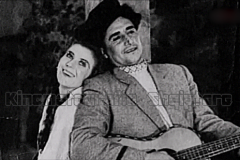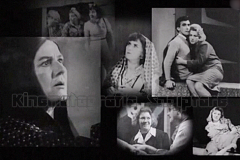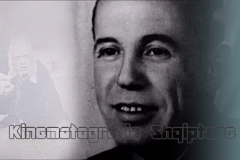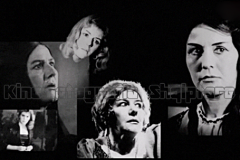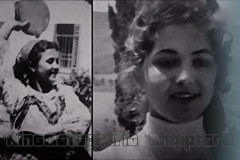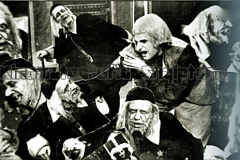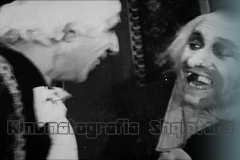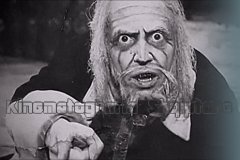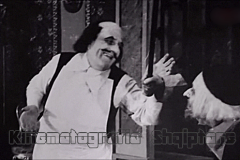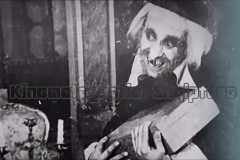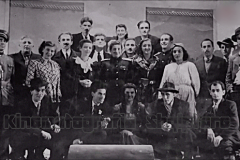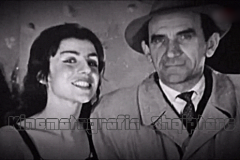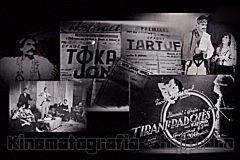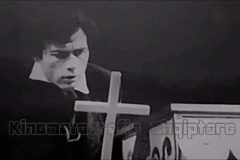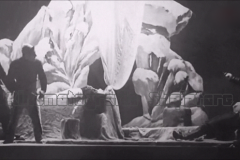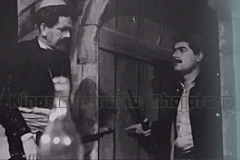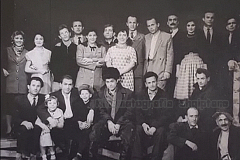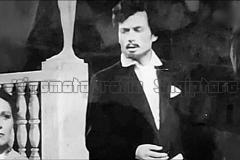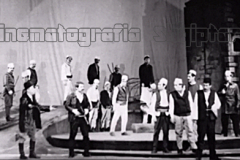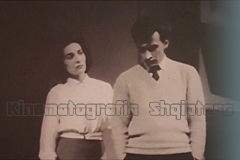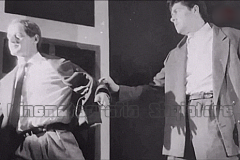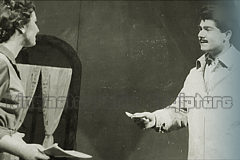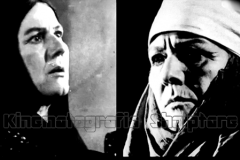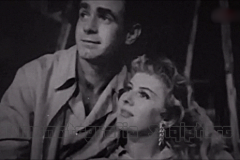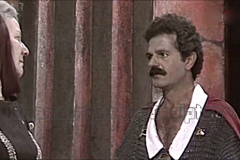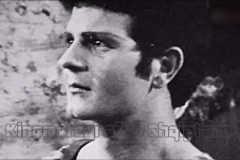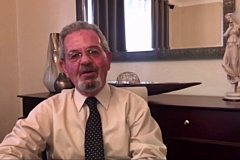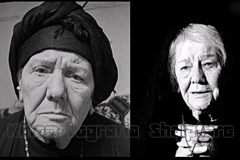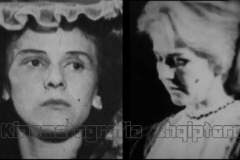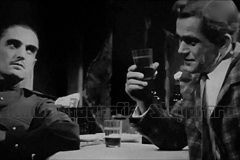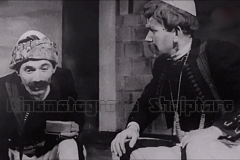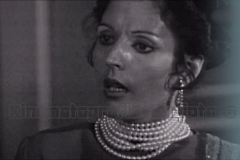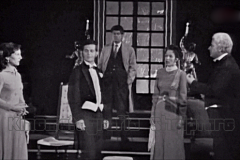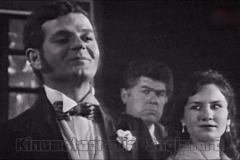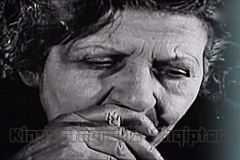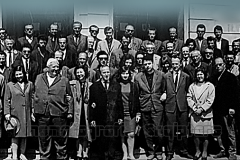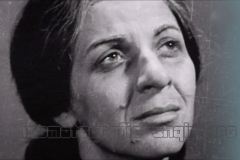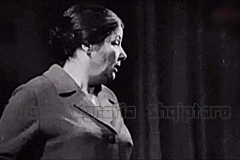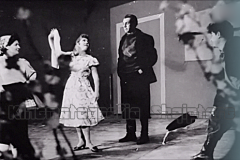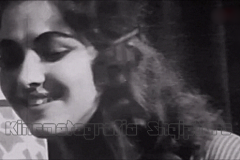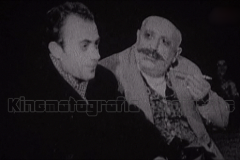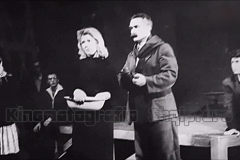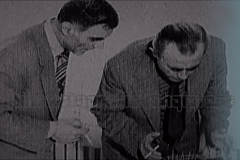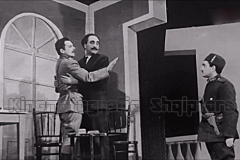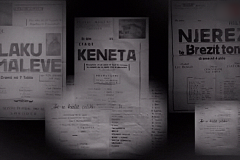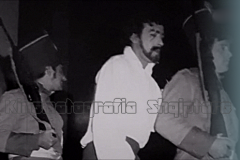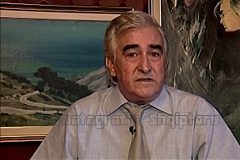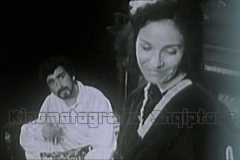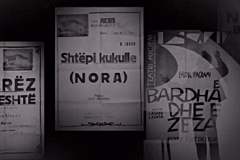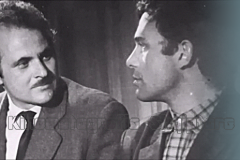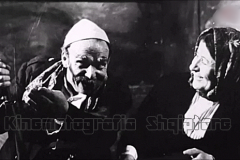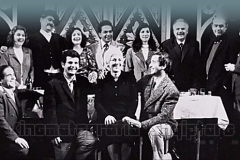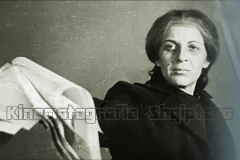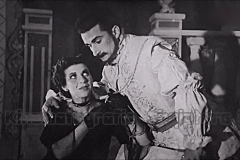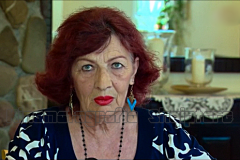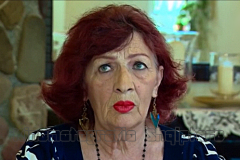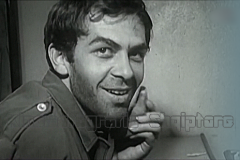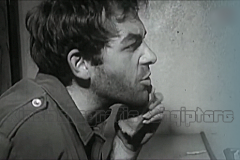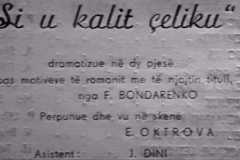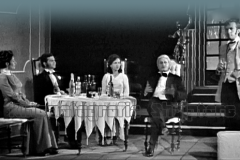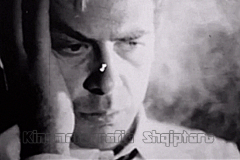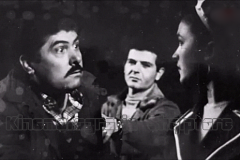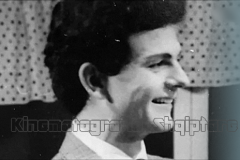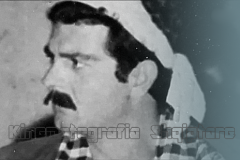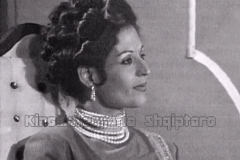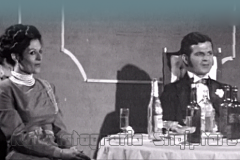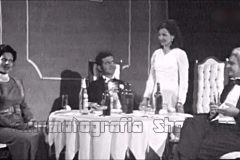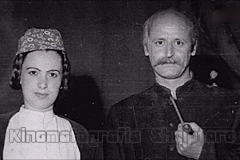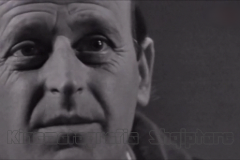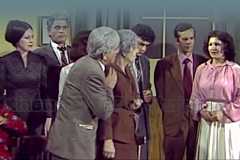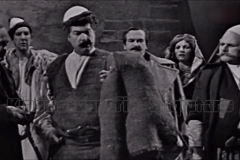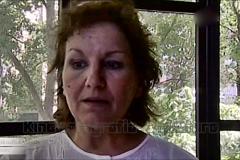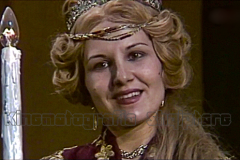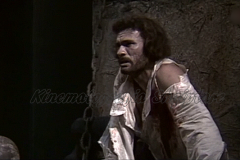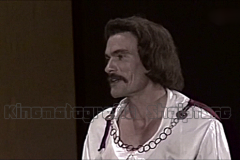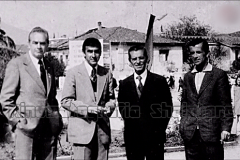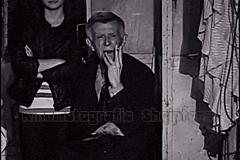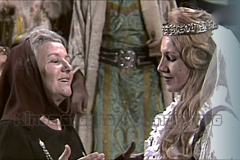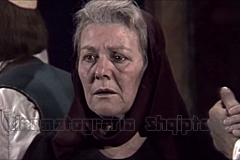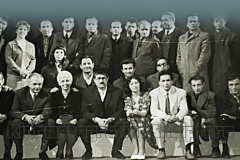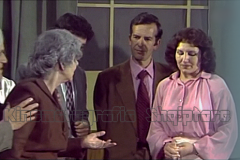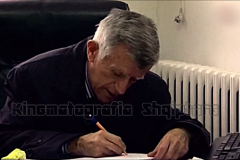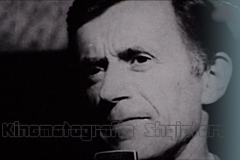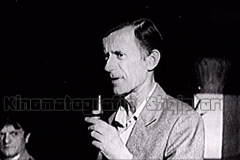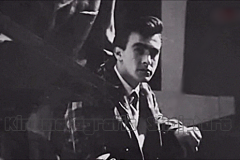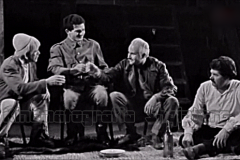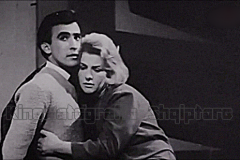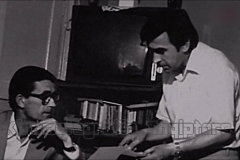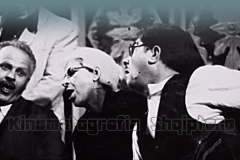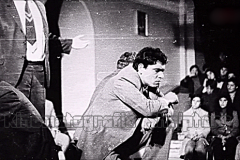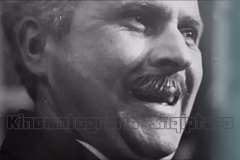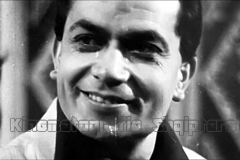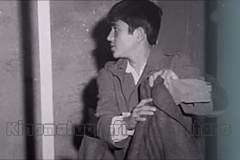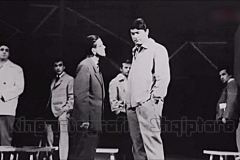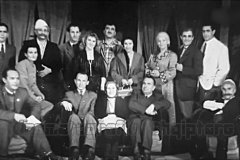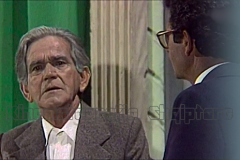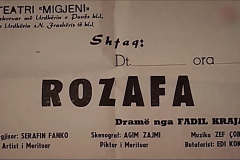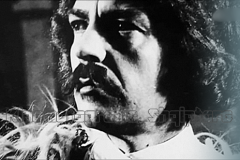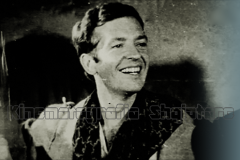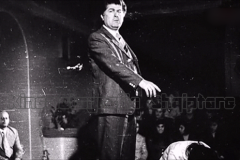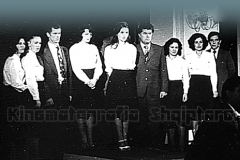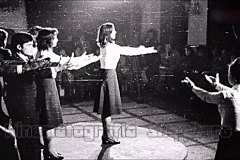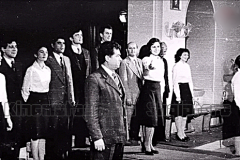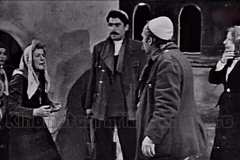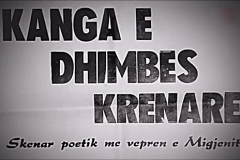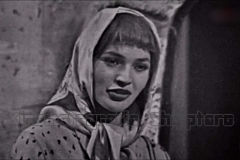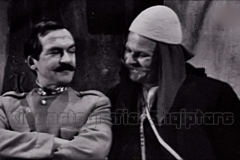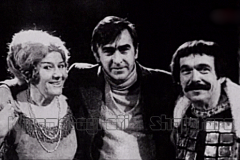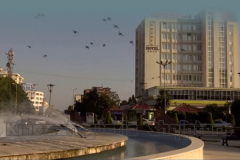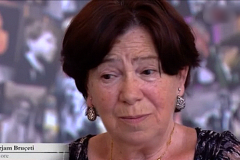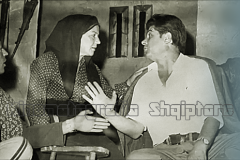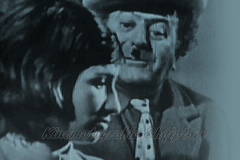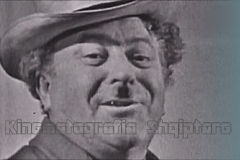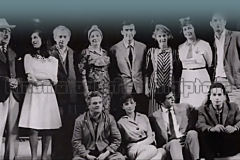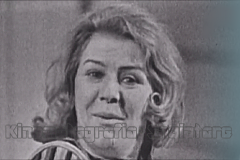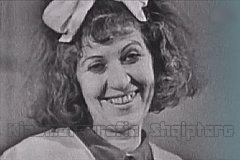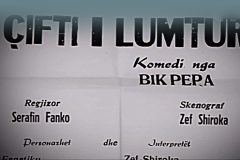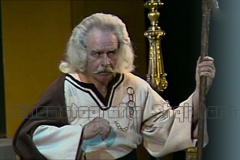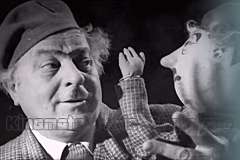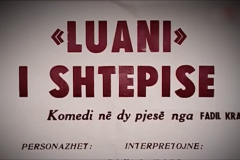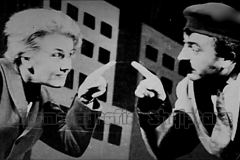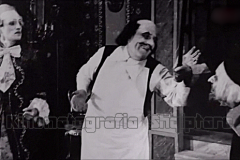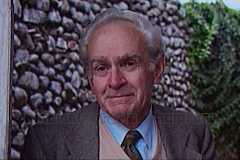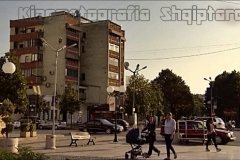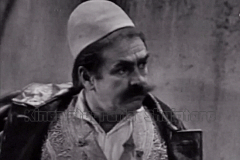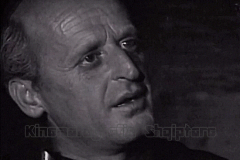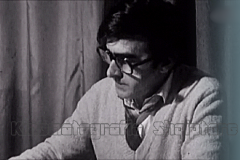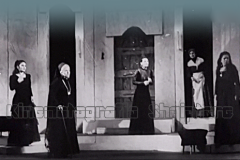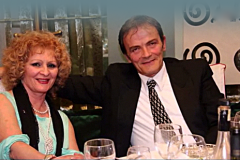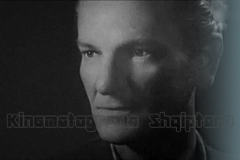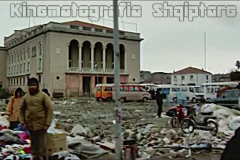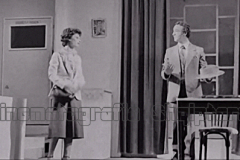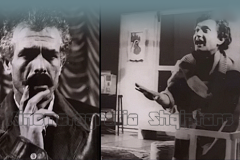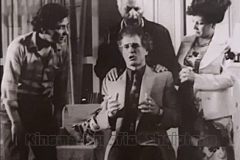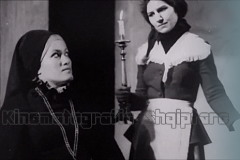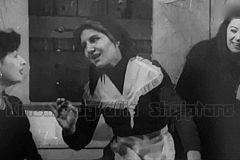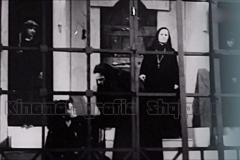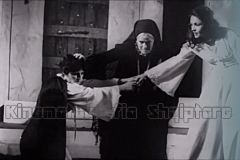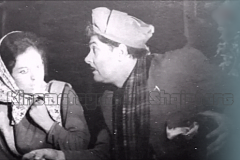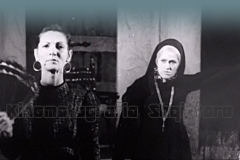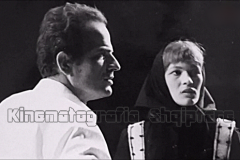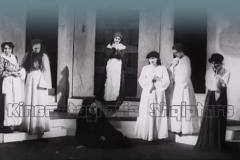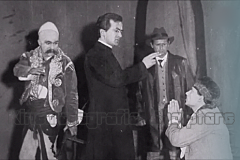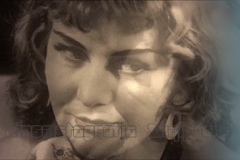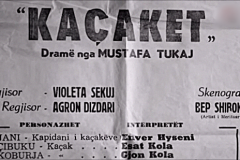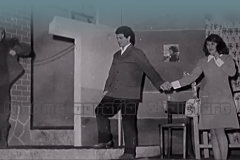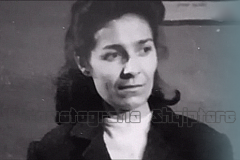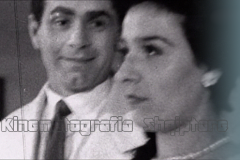Professional Theater “Migjeni” – Shkoder
November 24 is the official date of establishment.
This year coincides with the 76th anniversary of this important artistic institution. (1949 – 2025)
Illustrated history with photos (1949-2009)
Professional theater institution in the city of Shkodra, of the dramatic type, whose repertoire consists of performing dramas, tragedies, comedies, etc. The previous theatrical traditions that inherited are early, especially those of the period of the National Renaissance, the period of the monarchy and the first years after the liberation of the country.
In 1879, the farce “Makka” translated from Italian, performed by the students of “Saverian” College, appeared in Shkoder. In 1890, the Jesuit Order of the Shkodra Catholic Church was able to build a hall in Shkodra to organize theater performances. This is the first theater institution established with the contribution of the church, although there were many obstacles from the Turkish authorities. The works of Anton Xanoni (1863-1915), Kole Mirdita (Helenau) (1899-1936), Zef. M Harapit (1891-1946); as well as others, Henrik Lacaj, Filip Papajani.
The works of these authors became part of the active repertoire of companies and theater groups of the time. A number of cultural and artistic societies operated in Shkoder, including the theater group. These companies were: “Rozafat”, “Vllaznia” (1919-1922) and “Bogdani” (1919-1939), “Vaso Pasha”, “Një tube djelmni Shkodrane” ; “Mustafa Pasha”, “Teatri Shkodra” (1923 -1926).
The “Bogdani” company has been more long-term; of a cultural dimension at the national level. Its theater branch has given a total of 41 pieces of different stage genres.
In 1931, in the competition held in Tirana, among the theater groups of the country, its amateurs were awarded the First Prize for the part “From slavery to freedom”. Among the longest-lasting plays in the repertoire of this company are mentioned: “Ferdinand Cortez”, “Ora e Shqypnis”, “Flamuri i Shqypnia”, “I padituni per gjoksi”, “Trimi ngadhnjyes”, “Beomundi i Altemburgu”, “Pjetër Nika” , “te ikunit e zonjes se Shkodres”, “Ferdinand of the Medici”, “The Huguenots”, “The Evil One”, “From Slavery to Freedom”, “One Night in Florence”, “The Count of Retimo”, “Themistokłi, fatos of Athens, “Atroxerxes”, “Kumbonat e mbramjes”, “ßèse e trimni” or “Atil Reguli”, “Laku i mollkuem”, etc.
Some of the most successful pieces of the amateur theater groups of Shkodra were: “Besa” by Sami Frashëri, “Bylbyli ne Shkodër” by N. Vasije, “Atdheu nuk mohohet” by Gjergj Sheldija, “Cubat” by Frederik Shiler and “Filja ” by Teodor Kerner, “Death of Skanderbeg” and “Moisi Golemi” by Kol Mirdita” (Helenau), Moliere’s comedies “I ligu per mend”, “Kopraci” and “Mjek me perdhuni”.
The plays also resonated for the time: “Tre cubat”, “Servant of Two Lords”, “Goose”, “The Nightingale”, “Vllaznia dhe Shkorpa”, “Two Gentlemen Without Pants”, “Kombi e flamuri”, “Two Hunchbacks”. , “Sarrafi”, “Moisi Golemi”, “Homeland is not denied”, “The return of Skanderbeg “, “Adventures of Pacalini”, “Shkodra`s metamorphosis”; the dramas “Pirro Neoptolemi”, “Karl Topia” as well as the well-known comedies “Dhëndër me perdhuni”, “The banker’s daughter”, “I will kill myself”, “nder dhe qytetari”, “Bluff advertising”, “Brotherhood and interest” by Kristo Floqi*, “Lufta e Silastres” by Namik Qemal, “Filja” by Teodor Kärner, “Andromaka” by Rasini, “The Two Servants” (adaptation from Goldon), “Autobiography” by V. Nushič.
On August 10, 1919, the theater group presented the piece “Erminia e vorfén”, which was quite successful and was hailed by the press. Meanwhile, in Shkodër the theater societies were also well known: “Shkodra”, “Populli”, “Leka”, “Malet tona”, “Oratorios”, “Federation of Albanian Youth”, “Albanian Faith” and that of the Catholic clergy, with performances such as “Gamori i babatasit” by Gjergj Fishta, the dramatization of Biçer Stau’s work “Kasollja e ungjit Tom”, the historical drama “Gjin Bue Shpata” by Filip Fishta, the dramas “Robi i Shen Domingut”, “Skënderbeu’s Sword”, “Ginovefa of Brabant”, “Ballaban Pasha”, “Nata e shtojzavalleve”, “Election of a deputy” etc.
Socrates Mio staged the play “The Count of Saint Zfiermen” (1935) , Andrea Skanjeti produced three plays “Ali Pashe Tepelena dhe suljotet” in 1936 (based on Kupertsi’s novel), “The midnight curtain” (1937) and “Two prisoners” (1938). Loro Kovaci* would play the main roles in the plays by H. Lacaj, “Moisi Golemi”, “The Return of Skenderbeu” to Kruja and “Two Princes for a Maiden”, namely in the years 1936, 1937, 1938.
In the period of 1935-1938, they were given the plays “Armiku i Popullit” by H. Ibsen, “Cubat dhe Wilhelm Teli” by F. Schiller, “Kaloresi doreshtrenguar” by A. Pushkin, “The servant of two masters” by K. Goldoni, “Erminia e vorfen” elaborated by Kol Gurakuqi, Korlo Topia by K. Floqi, etc. The groups near the Catholic church presented Gj. Fishta’s plays “Shepherds of Bethlehem”, “Luigi Conzaga”, “Saint Francis of Assisi”, “Judas Maccabe” as well as the plays “Llogoret e ullinjeve”, “Isaac”, etc.
All this rich calendar of societies and theater performances in the city of Shkodra, however reduced or interrupted during World War II, after the liberation of the country was revived in other forms of organization near the production centers and the “House of Culture” of the district, which had shown several pieces by foreign authors, such as: “Beyond the Horizon” by O’Neil, “The Engagement” by AP Chekhov, “Bujtina e te vorfenve” (Fundërrinot) by M. Gorky, “Enemy of the People” by H. Ibsen and several plays by Soviet authors.
From the works of Albanian authors, the drama “Besa” by S. Frashëri was shown, the comedy “Cani Hoxha” and Besim Levonja’s “The Prefect”*. As a result of the impetus that the Amateur Theater Movement had received, as well as the intention of the government of that time to establish a network of professional theaters in the main cities of the country, it was possible to create the theater “Migjeni” in 1949, the first professional theater after the State Theater.
The theater was initially formed with only 8 professional actors: Adem Kastrati*, Antoneta Fishta, Çezarina Çiftja, Ndrekë Prela, Ndoc Deda, Paulin Lacaj, Tefe Krroqi, Vitore Ujka. In the composition of the troupe, some semi-professional actors were activated with roles, among them: Zef jubani, Tinka Kurti, Lin Gjonej. Cesk Vuksani etc.
Below is the official document from the government in power at the time:

The director was Andrea Skanieti. For the first years, performances were given in the old hall of the Saverian College, until the new theater building was built in 1956.
The inaugural premiere of the theater was the drama “The Overthrow / Përmbysja”, by the Russian writer, Boris Llavrenjev.
In the first decade, pieces of Soviet authors served as the basis of the repertoire, but in the 60s this ratio changed. Among the impressive performances of this theater in its beginnings was the realization of the comedy “Koprraci” (1952) by Moliere, where the actor Zef Jubani skillfully and with strong sarcastic pathos embodied the complex figure of Harpagon, clearly emphasizing his social vulnerability and character deformation, human from the vice of avarice. To be noted were also the staging of Moliere’s other comedy, “Tartufi” (1955), as well as K. Goldoni’s comedies: “Servant of Two Masters” (1955), “Two Venetian Twins” (1959); the comedy “The Barber of Seville” of de Beaumarchais (1957).
Under the occupation of Xhemal Broja was the first Albanian drama that was staged during the first ten years, supporting the tendency to encourage and support dramaturgy national with works by local authors, such as: “Our land” of Kolë Jakova” (1954), Shtate shaljanet” and “Votra e huej” by Ndrek Luca etc.
However, comedies were the most loved for their very dynamic nature, humor and communicative sense with the audience of the time. Vishnjevski’s optimistic tragedy, staged by the Soviet director V. Bortko, marks one of the high interpretative points of this theater, where the tragic and heroic spirit was intertwined with the poetic and romantic pathos and where the development of the main characters of the work carried the direction the opposite of the conflict was harmonized with the action of the vast mass of the sailors of the warship, successfully exploiting the ancient structure of the chorus from Greek tragedy.
About 100 actors and a symphony orchestra were active in this performance. Another successful performance of this time was the staging of the drama “Nora” (1960), author and director Andrea Skanjeti*.
The appointment of Esat Oktrova* as troupe director in the early 1960s, who had graduated from the Higher State Theater Institute (GITIS) in Moscow, Soviet Union, brought about a significant improvement and increase in the professional level of the troupe of actors, as well as a clear and advanced directorial vision. This was shown especially in the staging of the drama “Histori Irkutase” by the Russian playwright A. Arbuzov, as well as the dramatization of the novel “Kêneta” (1961), by the writer Fatmir Gjata*.
At the 1961 Festival of Professional Theaters with both of these pieces this theater won the First Prize. Among the shows that were welcomed by the public of Shkodra city and beyond, which mark high artistic levels and an interesting directorial treatment, were: the drama “Shtepi kukulle” e Ibsen (196I), the comedy “The lie has long legs” by Eduardo de Filipo, the drama “The Old Man of the Mountains” by Tom Shoshi (1962), the comedy “Lottery ticket” by Dionis Bubani (1963), the dramas “Njerez te trefishte” by Ibrahim Uruçi*, “Zekthi” by Etel Vojniçi (1964), “E bardha dhe e zeza” by Fadil Paçrami, “The fisherman’s family” by Sulejman Pitarka*, “Cuca e maleve” by Loni Papa” (1966), “An event in the factory” and “Lagjia e varfen” by F. Paçrami” (1968), “Keshilli i ndrikullave” by Sherri Mita” (1969).
In these works, the theater brought to the stage the concern for the moral health of the society, the emancipation of women and the attitude towards love, the resistance to the invasion and the invaders, the harsh class conflicts usually viewed from the political and ideological point of view of the time, etc.
During the 1960s, Albanian dramaturgy gained a leading place in the theater repertoire. In the 70s, several pieces were staged that had an impact on the audience for the sharp political-social issues and conflicts as well as for the spirit of the time, such as: “Night Signals” by F. Kraja*, “Mother’s Rifles Karar” by B. Brecht (1970), “Kater nga armata” of Serafin Fanko*, “The second face” of Dritëro Agolli* (1973), “The happy couple” of Bik Pepa* (1974), “Lion of the house” of F. Kraja, “Lindje ne tufan” of S. Fankos, “Pomegranate” Flowers by K. Jakova (1977).
A constant preoccupation of the theater, which constitutes at the same time a feature of it as far as the ideological tendency is concerned, has been the capture and bringing to the stage of some specific phenomena of an ethnopsychology and customary nature, such as the relapses of Lekë Dukagjini’s canon with its parts of blood feuds that were used by “enemy” or subversive elements, usually intertwined with the need to overcome backwardness, for unity and progress among the highlanders, etc.
Of this nature have been the staging of several important pieces, especially those of Fadil Kraje such as “Fisheku ne pajë” (1967), which has been performed over 250 times, “Djem te mbare” (1974), “Shpartallimi” (1976), “Baca i Gjetajve” (1979); or K. Jakov’s “Perkolgjinajt” (1965).
In 1981, the “Migjeni” theater achieved a well-deserved success with the drama “Gjaku i Arbërit” by F. Kraja, based on Albanian myths and legends, where in the eye, tragic pathos and epicism in the treatment of the actors’ play, the presence of symbolic elements in the scenography solution, the clear directorial image that sometimes-followed poetic reveries with a normal, almost pictorial beauty of the composition of mass paintings.
During this period, several works from the previous repertoire were re-staged, the drama “Roots of Love” by Mustafa Tukaj (1982), while in 1983 a performance of the poetry theater type was successfully applied, first from Migjeni’s creativity and then also by other Albanian authors, an experience which was later embraced by other theaters in the country.
The dramas “Cështja e Blertes” by F. Kraja (1984), “Visit of the inspector” by Xh. Priestly, “General of the Dead Army”, dramatization by S. Fanko, based on the novel by Ismail Kadare, (1987), “Investigation of Peter Vaisi” (1988).
The period after the 90s brought a radical change regarding the expansion of the repertoire with pieces and authors that were once forbidden, as well as the treatment with a single language of political and social phenomena, historical ones, explorations into the shaken human psyche, offering curious subjects, characters and ideas untouched before, with the application of new styles and forms in acting, directing, scenography.
But, on the other hand, as far as the economic and financial support aspect is concerned, the transition period was followed by the drastic limitation of the artistic staff as well as the activity of this theater in general.
At the beginning of the 90s, the theater turned to one of the dramatic works of Gjergj Fishta*, the satirical piece “Gomari i Babatasi” (The Donkey of Babatasi) (199I); after Sterio Spases’ novel, “Why” (1995), as well as bringing back to the stage the once anathema and banned drama of Minush Jeros*, “Njollat e murrme”, which was staged by the French director Domenik Dolmje.
With the plays “Çmurosja” by S. Fanku (1994) and “Ftesë nga larg” by Stefan Çapaliku (1996), this theater won awards at nationwide theater festivals in the following years.
Interesting treatments and attempts to bring a new theatrical language were noticed in the plays: “Franku V” by F. Durrenmat, “Knocking at the door of pain” by S. Fanku, (1998), “The last visit” (1999) and “Shiten`s Island” by A. Brahusha* (2002), Italian melodrama “Ultima luna” (2003), “Play for me on the violin” by Gazmend Krasniqi” (2004), “Enter word from dole”, with motifs from Kristo Floqi’s comedies’ (2004), “A simple story” by E Mehilli* (2006) eti.
Among the directors who have significantly influenced the creation of the artistic profile of the theater were: Andrea Skanjeti, Lec Shllaku, Esat Oktrova, Serafin Fanko, Tonin Ujka, Elez Kadria, Fatbardh Smaja.
Among the most prominent actors, who have created high-level artistic figures, creating a great sympathy and admiration for the Shkodran and Albanian public at large, are mentioned: Zef Jubani*, Tinka Kurti*, Preng Lëkunda, Adem Kastrati, Lec Bushati, Bep Shiroka, Ndrek Prela, Vitore Nino, Violeta Sekuj, Ymer Bala, Viktor Bruçeti, Agron Dizdari, etc.
Set designers were: Lec Fishta*, Pjetër Deda, Arben Selimi, etc.
Among the essential features of the theater, the following are appreciated: the care for the Albanian drama, the treatment of a problem close to the traditions and way of life of the area, the liking for the historical and epic drama, the gender diversity and that of the types of performances, the use of the folkloric and ethno-psychological wealth with the aim of strengthens of the national spirit, contemporary trends in the application of the artistic language, especially in that of the director, as well as the presence of some actors with artistic personality at the national level.
The “Migjeni” Theater building, erected in 1956, is among the first to be built for the needs of performing arts. It is located on the axis of “Republika” boulevard. The front facade, of the Soviet architectural model, in addition to the classical solution, also expresses a monumental aspect, where the influence of the national heritage in popular construction, as well as the foreignness of mostly eastern Soviet models, is shown.
It has a symmetrical structure, in the shape of the letter T, with the extended piece at the back. The hall has a capacity for 600 spectators, with seats arranged in arched rows. Part of the audience are also the balconies on the second and third floors, as well as the loggias on the side of the hall.
Each floor, in the front part of the building, has rest rooms, exhibitions, wardrobe space and other services. The theater, together with the (united) variety show, currently had until v. 2009, 37 people, including auxiliary personnel.
The drama theater section has 7 actors, 1 scenographer, 1 director, 1 stage inspector, 6 background assistants. The most complete personnel achieved before the year 199, especially for the Theater Troupe, resulted in a total of 30 people, of these 19 actors, the director, 2 directors, the set designer, 7 assistant personnel.
_______________
Albanian Cinematography in activity since 2013
Reference (with corrections): Albanian Encyclopedia, Theater and Cinematography – Toena 2009 / J. Papagjoni / p. 492-493-494-495-496.
History of the Albanian theater 2 models (Textbook Publishing House – Tirana 1985) p. 155, S. Moscow, I. Sukaj / Stage and Screen N4. 1981 p. 12-14. Mikel Prendushi: Historical drama in the amateur theater of Shkodra from independence to c. 1939…
Follow us: Blog: https://albaniancinematography.blogspot.com/ Facebook: https://www.facebook.com/ksh.faqjazyrtare Dailymotion: https://www.dailymotion.com/kinetografiashqiptareartisporti YouTube: https://www.youtube.com/channel/UCDRYQ5xCyGkfELm3mX8Rhtw
Discover more from Albanian Cinematography - Sport
Subscribe to get the latest posts sent to your email.

